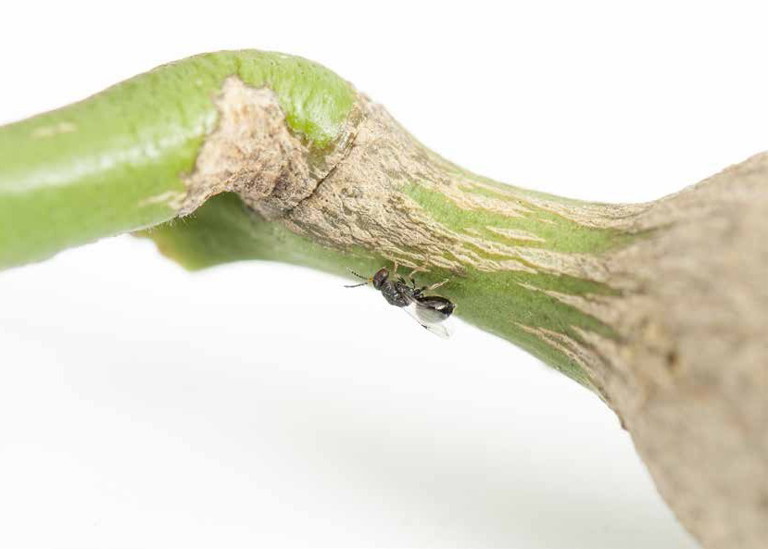pest management
Get the goss on GALL WASP
The citrus gall wasp has established in the Perth metro area, so it’s time to educate yourself to stop it spreading into our growing regions.
Words Rachelle Johnstone, development officer

ORCHARDS in Bindoon and Harvey played host to seasonal field walks in October that focused on citrus gall wasp (CGW) monitoring and simple measures to protect orchards from unwanted pests and diseases. These events attracted growers and crop advisers from northern and southern production areas.
The Department of Primary Industries and Regional Development (DPIRD) organised the events in conjunction with WA Citrus as part of the Citrus Integrated Pest and Disease Management (IPDM) extension project.
DPIRD research scientist Rachelle Johnstone provided an overview of CGW, including its lifecycle, monitoring and management options. She said: “Citrus gall wasp, which produces galls on trees that can impact production with high infestations, is a pest of concern to the WA citrus industry. This wasp has established in the Perth metropolitan area and now threatens to spread into our growing regions.
“Monitoring is essential for CGW control because low-level infestation may not require chemical intervention. New infestations are difficult to detect as galls can be small and hidden in the canopy behind the summer and autumn flushes.
“To demonstrate how difficult monitoring can be, artificial galls were hidden in the orchard and participants were tasked with monitoring the block to find them. The exercise worked so well that some of the ‘galls’ are yet to be found!”
Future events
Keep an eye on your inbox for details on our upcoming IPDM events. Please contact Rachelle for more information or to register your interest. The Citrus IPDM extension project has been funded by Hort Innovation, using the citrus research and development levy and contributions from the Australian Government. Hort Innovation is the grower-owned, not-for-profit R&D corporation for Australian horticulture.
MORE INFORMATION
Rachelle Johnstone rachelle.johnstone@ dpird.wa.gov.au; citrus gall wasp control www.agric.wa.gov.au/citrus-gall-wasp; several IPDM fact sheets (including CGW) have been produced and are now available on the NSW DPI website under the ‘IPDM extension program’ tab; and find additional information on monitoring and control in the story ‘Wasp Watch’ in WA Grower, winter 2023.
“ This wasp has established in the Perth metropolitan area and now threatens to spread... ”
You’ve found CGW – What Now?

LEFT Upward rolling of leaves, deformed leaves and fruit, and zipper-like scarring is seen on capsicum plants.
Photography:
Cezar Moraes.
Early detection of CGW in our growing regions is important for effective control of this pest. The damage caused by CGW can lead to reduced fruit size and yield in heavily infested trees. If you find galls in your orchard or in trees close to your orchard, please report them by sending a photo and location using the MyPestGuide reporter app or web tool, (mypestguide.agric.wa.gov.au).
Six Steps to Protecting your Orchard from Gall Wasp
1 Treat new nursery stock coming into the orchard with an approved systemic insecticide that kills feeding larvae.
2 Inspect new trees on arrival and monitor them closely for gall development each winter for at least two years (in case you miss one in the first season).
3 Incorporate gall monitoring into your pest surveillance program, particularly in mid-winter when galls are most visible.
4 Contact your neighbours and work with them to ensure their trees remain free of gall wasp. This is a good investment of time that will save you money in the long run.
5 Continue to share the gall wasp message in your community, talk to local businesses that sell plants and/or chemicals and share Facebook and Instagram posts on the pest in your community.
6 Upskill… at an IPDM field walk. WA Citrus biosecurity representative Helen Newman covered how some simple measures, such as a QR code sign-in and a property map, can help protect your orchard. More on this in the Go Digital story in this section of WA Grower.